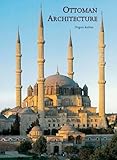Ottoman architecture / Doğan Kuban ; translated by Adair Mill ; photography by Cemal Emden
Material type: TextLanguage: English Original language: Turkish Woodbridge : Antique Collectors' Club, 2010©2010 Description: 719 pages : illustrations (chiefly colour), colour maps, plans ; 32 cmContent type: text Media type: unmediated Carrier type: volumeISBN: 9781851496044 (hardback)Uniform titles: Osmanlı mimarisi. English Subject(s): Architecture, Ottoman -- Turkey | Islamic architecture -- Turkey | Historic buildings -- TurkeyLOC classification: NA1364 .K8313 2010
TextLanguage: English Original language: Turkish Woodbridge : Antique Collectors' Club, 2010©2010 Description: 719 pages : illustrations (chiefly colour), colour maps, plans ; 32 cmContent type: text Media type: unmediated Carrier type: volumeISBN: 9781851496044 (hardback)Uniform titles: Osmanlı mimarisi. English Subject(s): Architecture, Ottoman -- Turkey | Islamic architecture -- Turkey | Historic buildings -- TurkeyLOC classification: NA1364 .K8313 2010| Item type | Current library | Shelving location | Call number | Copy number | Status | Date due | Barcode |
|---|---|---|---|---|---|---|---|
| Oversize | MEF Üniversitesi Kütüphanesi | Oversize Koleksiyonu | NA 1364 .K8313 2010 (Browse shelf (Opens below)) | Available | 0009663 |
Includes bibliographical references and index
Ottoman architecture before Sinan. Historical conditions of the development ; Buildings -- Ottoman architecture after Sinan. Sinan and the classical Ottoman architecture ; The opening to Europe.
"Ottoman Architecture developed in parallel with the political structure of the Ottoman Empire. Located at the intersection of Asia and Europe it was influenced by the numerous competing traditions of Islam, China, the Mediterranean and Byzantine worlds. Building on its early development particularly in Bursa and Edirne at the end of the 14th Century, the Ottoman world reached its high point during the so called Classical period 1437-1703 notably under the Sultans Suleyman 1st and Selim 2nd. The finest architectural achievements were undoubtedly the works of the court architect Sinan 1489-1588."--Publisher.
In English, translated from the Turkish
1
